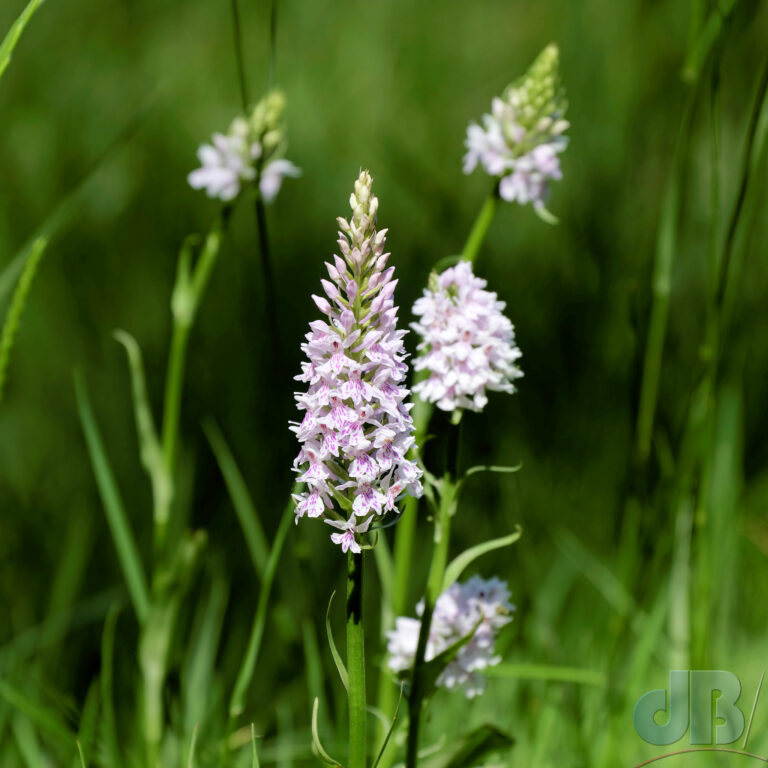I only occasionally photograph dragonflies and damselflies, the Odonata. My big zoom doesn’t give me the best results with these insects for some reason. However, I was at Brampton Wood yesterday to see the recently emerged Black Hairstreak butterflies. Took a shorter zoom, Canon 75-300mm for that job instead of my Sigma 150-600mm and tried my chances on snapping some dragonflies in between hairstreaks.
First in the frame was this lovely Black-tailed Skimmer, Orthetrum cancellatum. What a great scientific name.
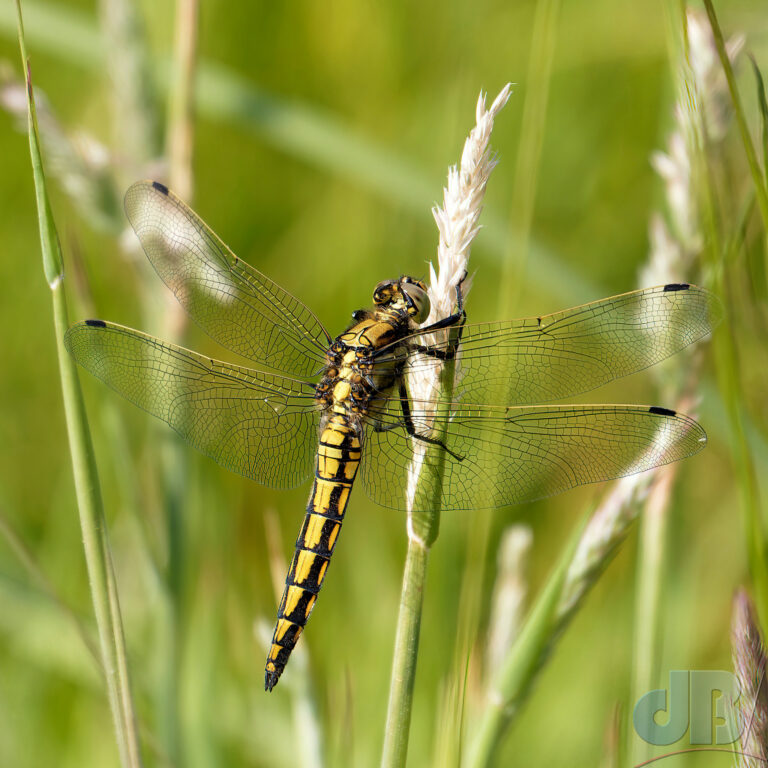
And, here’s a male of the relatively common species Broad-bodied Chaser, Libellula depressa, coming into land on a stick protruding from Wayne’s Pond at Brampton Wood.
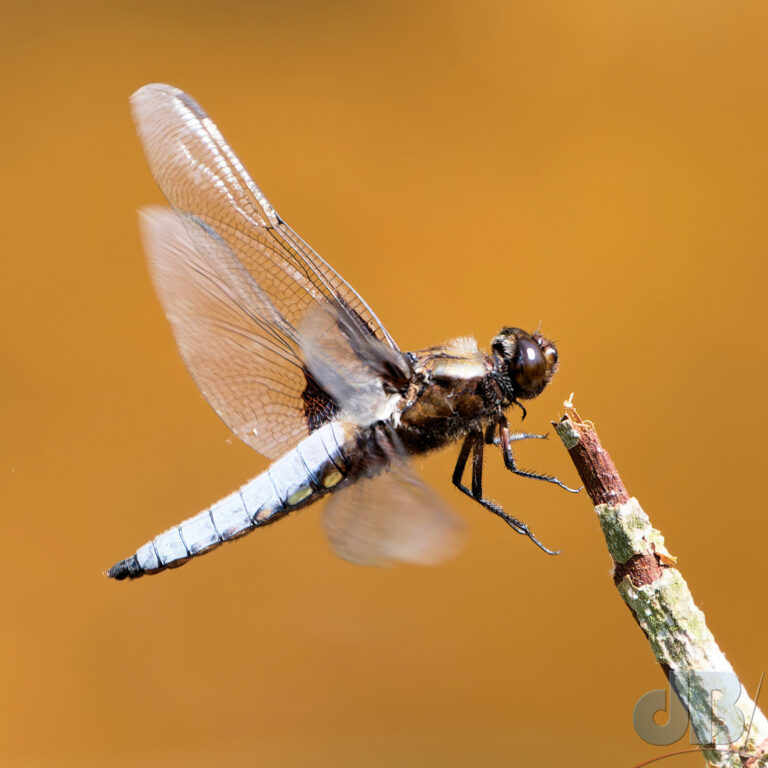
A Four-spotted Chaser, Libellula quadrimaculata, favoured the perching sticks in the pond too.
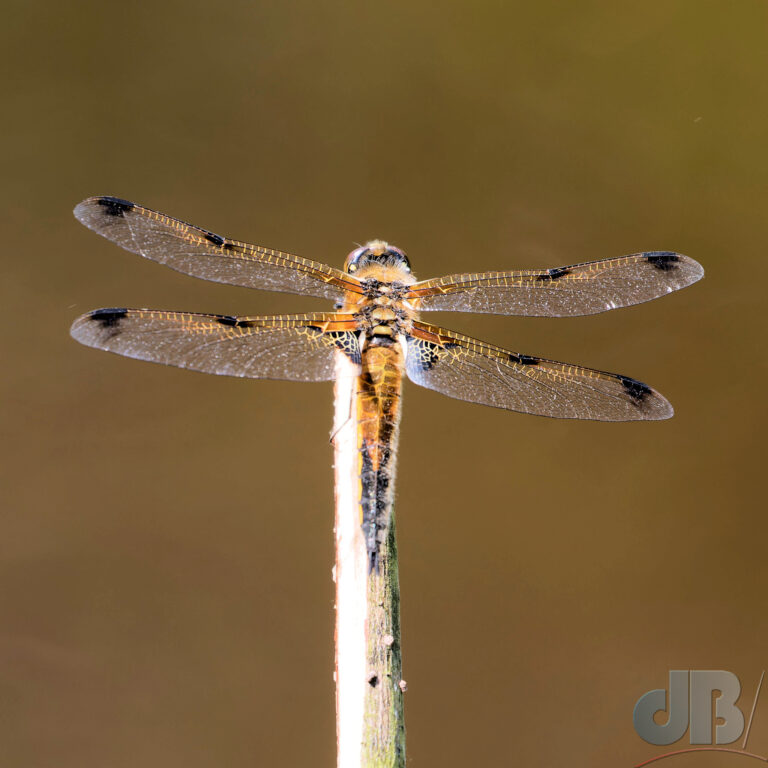
Another interesting dragon at Brampton Wood is the relatively rare Green-eyed Hawker, Aeshna isoceles. The isoceles is a reference to the yellow triangle on its second abdominal segment. It has an alternative vernacular name, Norfolk Hawker, this common name in the UK refers to its lasting presence in the county of Norfolk, although it was common in the Cambridgeshire Fens until the 1980s. It is now known to exist in Suffolk and Kent, but is localised and scarce.
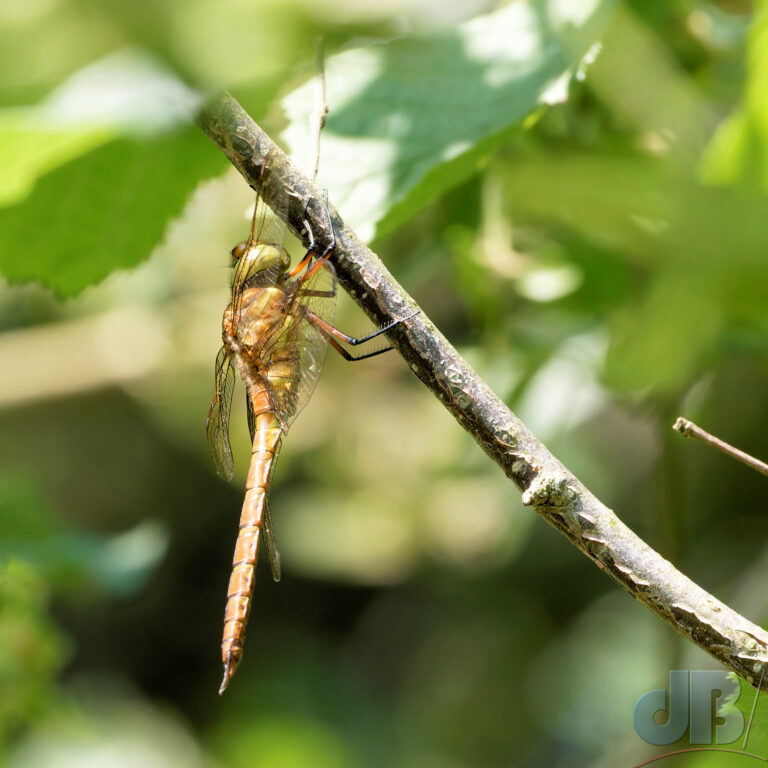
However, old Green Eyes is back…in Cambridgeshire. Although it remains fairly elusive; it always was a rarity. Perhaps the species is benefiting partly from the creation of numerous wetlands on the sites of old gravelworks in the county, such as RSPB Fen Drayton. It favours ponds, ditches, and marshes with dense vegetation and seems to rely on the aquatic plant Water-Soldier, Stratiotes aloides. There’s plenty of that in my garden pond, so fingers crossed and there is obviously something about Brampton Wood they like too.
In non-dragonfly news, also spotted a Bumblebee Plumehorn, a type of hoverfly, Volucella bombylans.
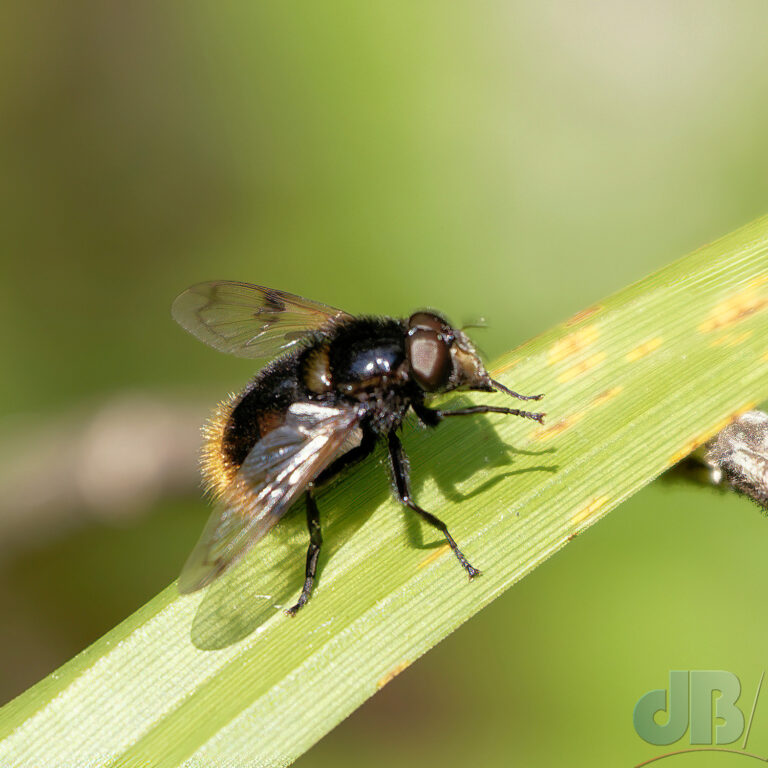
There were Brimstone and Garden Grass-veneer moths to be seen and Spindle Ermine and Pale Eggar moth nests, a few scattered Large Skipper butterflies on the site as well as several Speckled Wood butterfly. Also at play numerous Longhorn Beetle, a few European Hornet, and a lot of Green Oak Tortrix moths, Tortrix viridana. They’ve been coming to traps in large numbers during the last few days around Cambridgeshire, so it was no surprise to see them on the oaks in Brampton Wood.
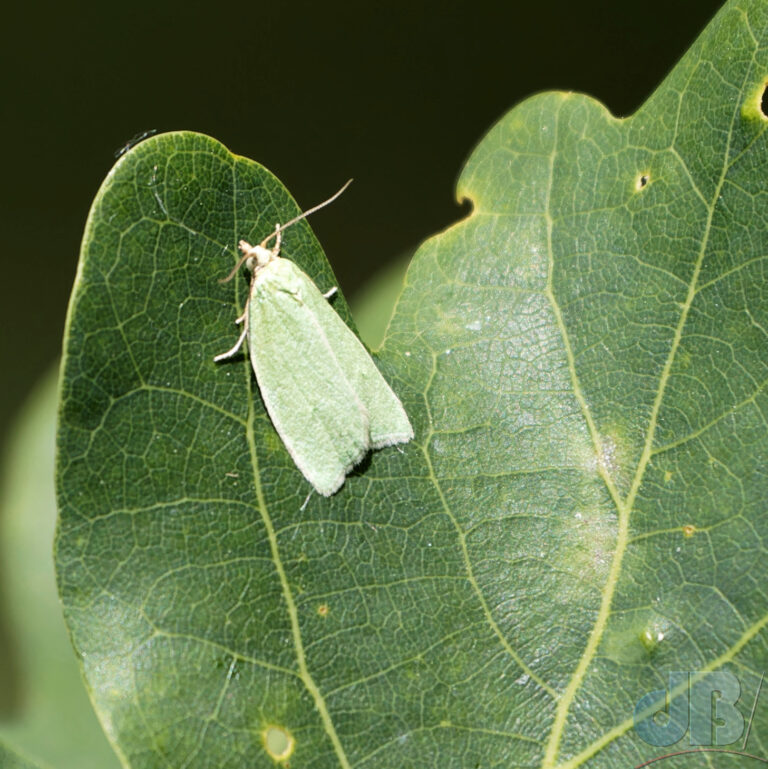
However, my target species for the day was the Black Hairstreak butterfly, Satyrium pruni. I estimate I saw 40-50 over the course of the visit. Although the butterfly is nationally very rare, it is present on this site and other ancient woodlands with well-established Blackthorn (Prunus spinosa) to the west and southwest in huge numbers. There were several within yards of the site entrance, one or two along the main ride, several on blackthorn near the aforementioned pond, and several on the two sites marked for visitors to observe them. I got photos of perching and puddling butterflies, some ovipositing females, and caught sight of a mating pair, but didn’t get the money shot of that coupling!
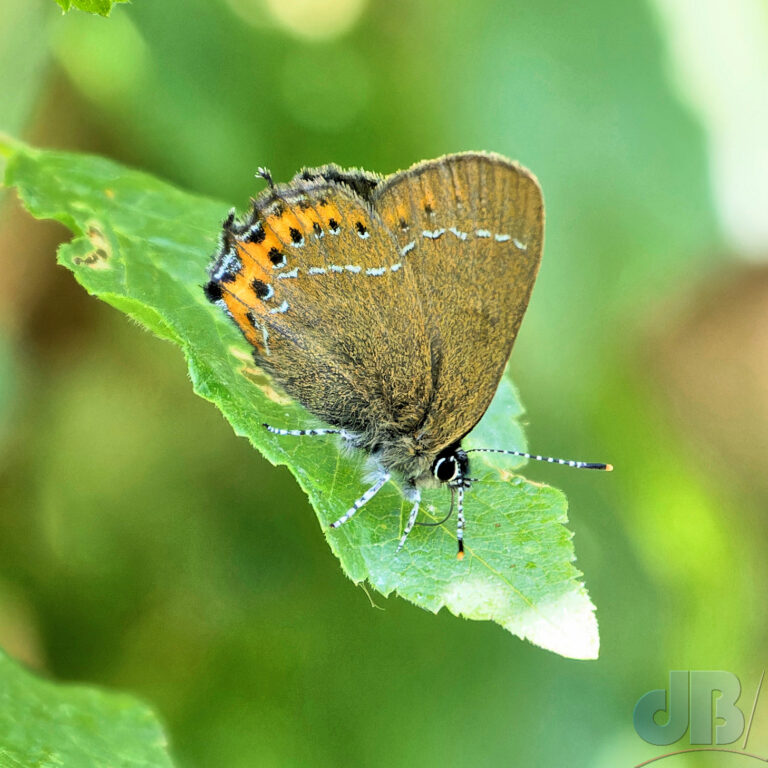
The Black Hairstreak was not known as a species until 1828 when a professional entomological dealer, Mr Seaman, charged with gathering up specimens of the rather similar White-letter Hairstreak delivered these to his patron only to discover a novel species among the White-letters. Edward Newman, a Victorian entomologist of note, declared the novel species to be the Black Hairstreak. Monk’s Wood, like Brampton, is an ancient woodland with a lot of old Blackthorn growing on heavy clay soil, just what the Black Hairstreak needs for its life cycle.
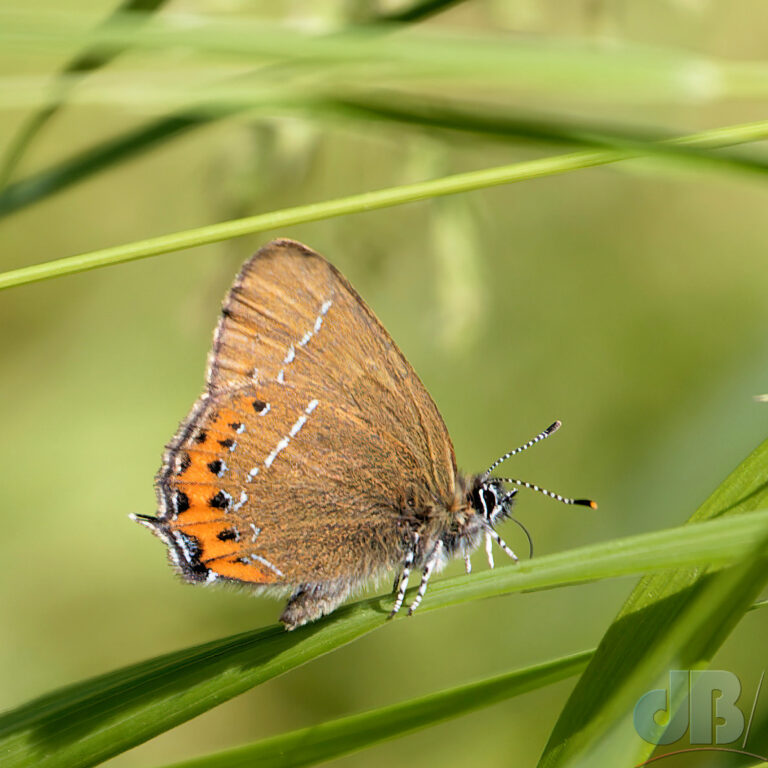
Another Black Hairstreak with a wing problem allows us to see the dark-brown upperside of the forewings with their orange-spotted fringe. Usually, it is very difficult to see the upperside of the wings as the insects invariably close their wings together when they land. It is worth noting that non-native Muntjac deer can be a voracious nuisance in this kind of ancient woodland. If it is allowed to graze freely in such habitat, there is the potential for rare, native species that rely on the habitat to be lost. As I understand it, at least one of our nature conservation organisations is involved in culling Muntjac where it is roaming freely in such habitat for the sake of conservation of the sensitive native species.
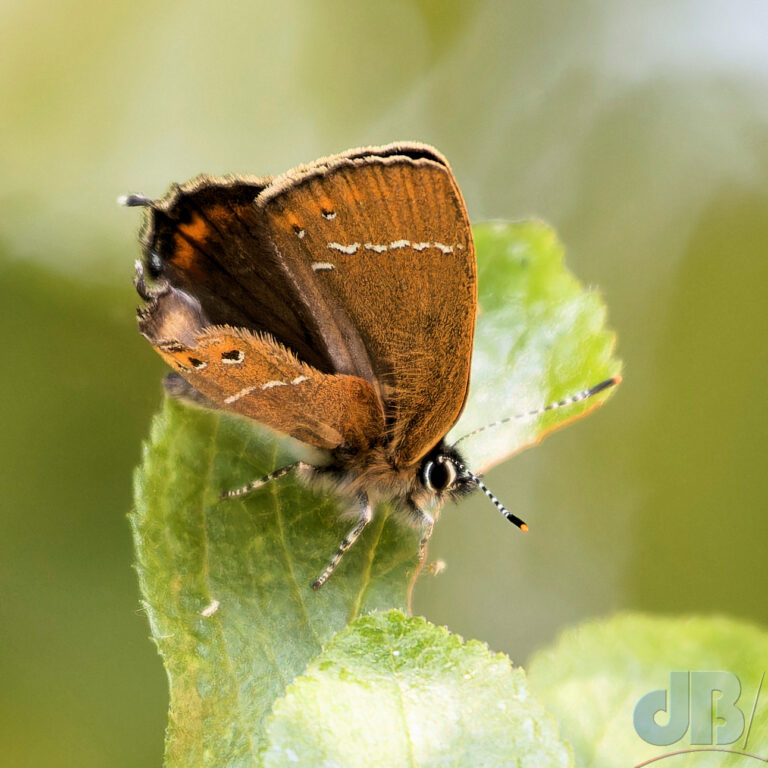
Not to be confused with a butterfly of the Americas, Ocaria ocrisia, with the same vernacular name, that also goes by the monicker Hewitson’s blackstreak.
One final thing – Common Spotted Orchid, Dactylorhiza fuchsii.
